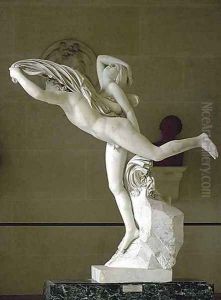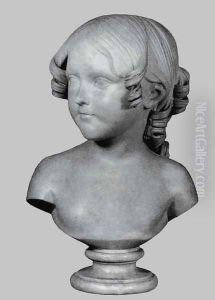Henri-Joseph Ruxthiel Paintings
Henri-Joseph Ruxthiel was a Belgian sculptor born in 1775 in Huy, then part of the Prince-Bishopric of Liège, which is now in modern-day Belgium. He emerged as a significant figure in European sculpture during the late 18th and early 19th centuries, a period marked by the transition from Neoclassicism to Romanticism. Ruxthiel's works are characterized by their technical skill, emotional depth, and the integration of classical and romantic elements, reflecting the turbulent political and cultural shifts of his time.
Ruxthiel's education and early career were deeply influenced by the classical traditions, yet he was also drawn to the emerging Romantic sensibilities that began to challenge the established norms. His ability to blend the classical emphasis on harmony and proportion with the Romantic spirit of expression and emotion set him apart from many of his contemporaries. Throughout his career, Ruxthiel received commissions from various European courts and churches, creating sculptures that ranged from portrait busts and monumental figures to decorative reliefs.
Despite the acclaim he received during his lifetime, Ruxthiel's work was somewhat overshadowed in the decades following his death in 1837, as the art world's focus shifted towards more radical expressions of Romanticism and the emerging Realist movement. Nevertheless, he left behind a legacy that is appreciated by art historians and collectors who recognize the subtlety and depth of his contributions to European sculpture. Ruxthiel's works can be found in museums, galleries, and private collections, where they continue to be studied and admired for their artistic and historical significance.

